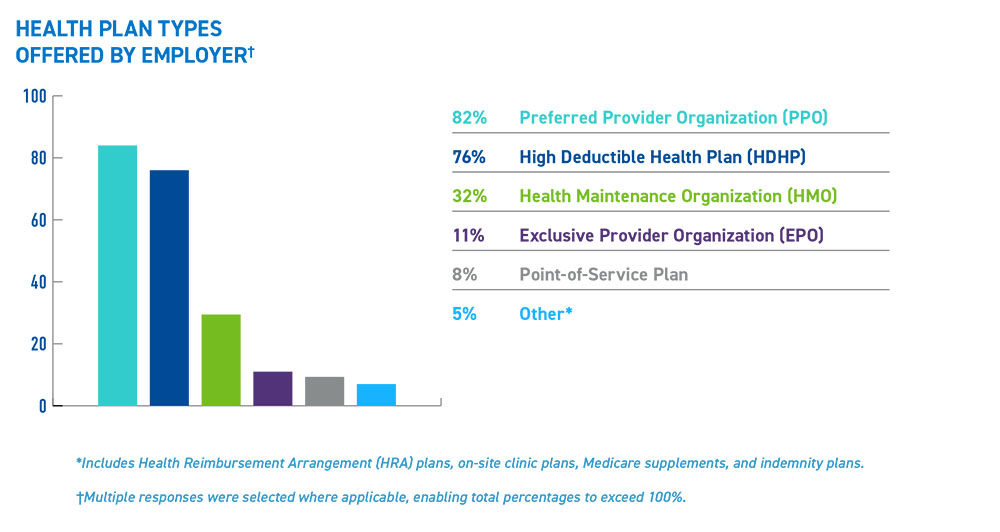The Future of Work and Benefits after COVID-19, Part 2
16 July, 2020By Rich Wolfe, Chief Executive Officer and Steve Campbell, Chief Human Resources Officer
In part two of our series, we take a closer look at how perspectives on the typical office environment and employee wellness will shift after COVID-19.
For part one of this post series, please click here.
Reimagining of the Traditional Office
From restaurants to retail environments, COVID-19 has demanded a serious reconsideration of how we structure our everyday lives and spaces, and the office environment is no exception. As companies consider welcoming workers back to their facilities, they must also be prepared to make changes in accordance with the latest health and safety standards.
For example, open-plan offices have gained popularity over the years, and as many as 70% of offices now utilize this layout.1 Without barriers like cubicle walls, however, open workspaces can make infection control more difficult to manage. Converting an existing workspace away from an open design can be a challenge, but adding privacy features like walls or partitions may actually pay off in terms of increased productivity.2
“Hoteling” is another approach to space utilization that we are likely to see more of in the post-COVID-19 workspace. With hoteling, employees are not assigned a permanent desk. Instead, they are free to utilize any available workstation to suit their needs and schedule. The hoteling concept allows facility managers to make the most of their space without the need to increase their office footprint (provided the proper sanitizing measures are in place).
One particularly important task when planning your office reopening is determining which employees actually need to be in the office, and which employees can continue working remotely. As companies leverage staggered office schedules and more employees opt to permanently work from home, the hotel desk concept may be a good fit for businesses looking to manage facility costs alongside financial impacts and opportunities.
Renewed Focus on Holistic Employee Wellbeing
Along with health concerns, COVID-19 has also caused significant financial stress for many people and their families. In the past, however, financial wellness initiatives have often been harder to define than other aspects of employee benefit programs – especially as employers navigate the wide range of program options and employee needs regarding their financial health.
Moving forward, we can expect financial wellness to become a key area of focus for proactive benefit teams looking to ease anxieties brought about by the economic effects of the pandemic. Companies may look to offer more comprehensive programs, resources, and decision support tools that offer clear guidance to help employees reach their unique savings and budgeting goals.
Additionally, although your workforce may enjoy a greater sense of flexibility while working remotely, there is also a heightened opportunity for employee burnout as a result of such changes. Today, employees are having to mentally shift their concept of work-life balance all the while working from home.
Without the defined boundaries of the office environment or their daily commute, employees may find it hard to fully “unplug” after their work day is over. With many employees expected to remain remote after the pandemic passes, addressing the risks of employee burnout is an important task that HR teams must be ready to tackle sooner rather than later.
Employees’ mental health will remain an important priority as the impacts of the COVID-19 pandemic continue to disrupt everyday life. Building awareness of your mental health resources and benefits – such as wellness programs and employee assistance programs (EAP) – will be a particularly crucial task to help support your employees through this transition.
Your benefits administration provider should be aligned with your benefits strategy throughout this unique period (including accommodating any additional focus on employees’ financial, mental, and overall wellbeing) and be ready to communicate and adjust to any changes as necessary to best support your employees.
HR leaders remain at the forefront of helping guide employees through this uniquely challenging period. For expert tips to help manage the latest demands on your business and communication strategy, check out Empyrean’s COVID-19 Communication Guide here. And for the latest insights into employee benefits, download your copy of the 2020 Benefit Trends Report from Empyrean.
Looking toward the future, it is clear that reliable partnerships and the right technology will become even more critical for every company’s continued success. As you develop and evolve your own COVID-19 strategy, be sure to evaluate the preparedness level of your partners as well. Doing so now will help ensure that both your business and workforce are ready to tackle whatever comes next – no matter what.
References
- Agovino, Theresa. “Fine-Tuning the Open Office.” Society for Human Resource Management. Alexandria, VA. June 2019.
- Wertz, Jia. “Open-Plan Work Spaces Lower Productivity and Employee Morale.” Forbes. Jersey City, NJ. June 2019.




